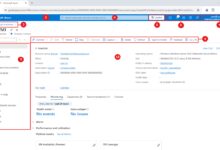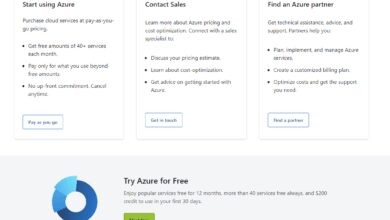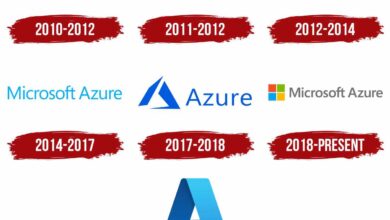msft azure: 7 Powerful Reasons to Choose Microsoft’s Cloud
Cloud computing has transformed how businesses operate, and msft azure stands at the forefront of this revolution. With unmatched scalability, enterprise-grade security, and seamless integration with Microsoft tools, it’s no wonder organizations worldwide are turning to msft azure for their digital transformation needs.
What Is msft azure and Why It Matters

Microsoft Azure, commonly referred to as msft azure, is a comprehensive cloud computing platform developed by Microsoft. It offers over 200 services, including computing, analytics, storage, networking, and machine learning, enabling businesses to build, deploy, and manage applications across a global network of data centers.
Core Components of msft azure
The strength of msft azure lies in its modular architecture. Users can pick and choose services based on their specific needs, from virtual machines to serverless computing. This flexibility makes it ideal for startups and Fortune 500 companies alike.
- Compute services like Virtual Machines and Azure Functions
- Storage solutions including Blob, Disk, and Queue storage
- Networking features such as Virtual Networks and Load Balancers
Global Infrastructure and Data Centers
One of msft azure’s standout features is its vast global footprint. With more than 60 regions worldwide, it offers one of the largest cloud infrastructures, ensuring low latency and compliance with local data regulations. This is critical for multinational corporations that must adhere to data sovereignty laws.
“Azure’s global reach allows us to deploy applications closer to our customers, improving performance and reducing costs,” says a senior IT executive at a leading European bank.
Key Benefits of Using msft azure
Organizations adopt msft azure not just for its technical capabilities but for the tangible business value it delivers. From cost savings to agility, the advantages are both immediate and long-term.
Cost Efficiency and Pay-as-You-Go Model
Unlike traditional on-premise infrastructure, msft azure operates on a consumption-based pricing model. You only pay for what you use, which eliminates the need for large capital expenditures. Azure also offers reserved instances and hybrid benefits that can reduce costs by up to 80%.
- Pay-per-use pricing for compute, storage, and bandwidth
- Hybrid use rights allow Windows Server and SQL Server licenses to be used in the cloud
- Cost Management tools provide real-time spending insights and budget alerts
Scalability and Elasticity
msft azure enables businesses to scale resources up or down instantly based on demand. Whether handling a sudden traffic spike during a product launch or scaling back during off-peak hours, Azure’s elasticity ensures optimal performance without over-provisioning.
Auto-scaling features automatically adjust the number of active servers based on CPU usage, memory, or custom metrics. This dynamic response reduces manual intervention and improves system reliability.
msft azure vs. Competitors: A Strategic Edge
While AWS and Google Cloud are strong contenders, msft azure differentiates itself through deep integration with Microsoft’s ecosystem, hybrid capabilities, and enterprise focus.
Integration with Microsoft 365 and Active Directory
For organizations already using Microsoft 365, msft azure provides seamless identity management via Azure Active Directory (Azure AD). This integration simplifies user authentication, enables single sign-on (SSO), and strengthens security through multi-factor authentication (MFA).
Azure AD supports over 2,600 pre-integrated SaaS applications, making it easier to manage access across platforms. This level of integration is unmatched by competitors and reduces administrative overhead significantly.
Hybrid Cloud Leadership
msft azure leads the hybrid cloud space with solutions like Azure Stack and Azure Arc. These tools allow businesses to run Azure services on-premises or in multi-cloud environments, offering consistency in management, security, and operations.
- Azure Stack brings Azure services into private data centers
- Azure Arc extends Azure management to any infrastructure, including AWS and GCP
- Enables unified governance and policy enforcement across environments
“Azure Arc has been a game-changer for our hybrid strategy. We now manage all our servers—on-prem, cloud, and edge—from a single pane of glass,” notes a CTO at a major logistics firm.
Security and Compliance in msft azure
Security is a top concern for enterprises moving to the cloud, and msft azure addresses this with a defense-in-depth approach, advanced threat protection, and comprehensive compliance certifications.
Built-In Security Features
msft azure offers a suite of security tools under Azure Security Center (now part of Microsoft Defender for Cloud). This service provides unified security management and advanced threat protection across hybrid cloud workloads.
- Continuous vulnerability assessment and remediation recommendations
- Just-in-Time VM access to minimize exposure to attacks
- Network security groups and firewalls to control inbound and outbound traffic
Additionally, Azure Sentinel, a cloud-native SIEM (Security Information and Event Management) solution, enables intelligent security analytics and threat hunting at scale.
Compliance and Certifications
msft azure complies with more than 90 global, regional, and industry-specific standards, including GDPR, HIPAA, ISO 27001, SOC 1/2, and FedRAMP. This makes it a preferred choice for regulated industries like healthcare, finance, and government.
Microsoft publishes detailed compliance documentation through the Microsoft Compliance Manager, helping organizations assess and manage their regulatory obligations.
AI and Machine Learning Capabilities in msft azure
msft azure is not just a cloud platform—it’s a launchpad for innovation. Its AI and machine learning services empower developers and data scientists to build intelligent applications without deep expertise in data science.
Azure Cognitive Services
Azure Cognitive Services provide pre-built APIs for vision, speech, language, and decision-making. These services allow developers to add AI capabilities to applications with minimal code.
- Computer Vision API for image analysis and object detection
- Text Analytics for sentiment analysis and key phrase extraction
- Speech to Text and Text to Speech for voice-enabled applications
For example, a retail company used the Face API to analyze customer emotions in-store, improving product placement and customer experience.
Machine Learning Studio and Azure ML
Azure Machine Learning is a cloud-based environment for training, deploying, and managing machine learning models. It supports both code-first (Python, R) and no-code (drag-and-drop) approaches, making AI accessible to a broader audience.
With automated machine learning (AutoML), users can build high-performing models by simply providing data and a target variable. The platform handles feature engineering, algorithm selection, and hyperparameter tuning automatically.
Learn more about Azure ML at the official Azure Machine Learning page.
DevOps and Application Development on msft azure
msft azure provides a robust ecosystem for modern software development, supporting DevOps practices, containerization, and microservices architecture.
Azure DevOps Services
Azure DevOps offers a suite of tools for planning, developing, testing, and deploying applications. It includes services like Boards (agile planning), Repos (Git repositories), Pipelines (CI/CD), Test Plans, and Artifacts.
- End-to-end CI/CD pipelines integrate with GitHub, Jenkins, and other tools
- Agile project management with customizable dashboards and backlogs
- Seamless integration with Visual Studio and VS Code
Teams can automate builds and deployments across multiple environments, reducing time-to-market and improving code quality.
Containerization with Azure Kubernetes Service (AKS)
For organizations adopting microservices, Azure Kubernetes Service (AKS) simplifies the deployment, management, and scaling of containerized applications.
AKS reduces the complexity of Kubernetes by handling critical tasks like health monitoring, node upgrades, and auto-scaling. It integrates with Azure Monitor, Azure AD, and Azure Policy for enhanced observability and security.
A leading fintech company reduced deployment times by 70% after migrating to AKS, citing improved resource utilization and faster recovery from failures.
Real-World Use Cases of msft azure
From healthcare to manufacturing, msft azure powers innovation across industries. Here are three compelling examples of how organizations leverage Azure to solve real-world challenges.
Healthcare: Improving Patient Outcomes with AI
A major U.S. hospital network implemented msft azure to analyze medical imaging data using AI. By leveraging Azure’s Machine Learning and Cognitive Services, radiologists received real-time assistance in detecting tumors and anomalies, reducing diagnosis time by 40%.
The solution also ensured HIPAA compliance through Azure’s built-in encryption and access controls, maintaining patient data privacy.
Retail: Personalizing Customer Experiences
A global retail brand used msft azure to build a real-time recommendation engine. By processing customer behavior data through Azure Stream Analytics and applying machine learning models, the system delivered personalized product suggestions across web and mobile platforms.
This led to a 25% increase in conversion rates and a significant boost in customer satisfaction scores.
Manufacturing: Predictive Maintenance with IoT
An industrial manufacturer deployed Azure IoT Hub and Azure Time Series Insights to monitor equipment health across 50 factories. Sensors collected vibration, temperature, and pressure data, which was analyzed in real time to predict failures before they occurred.
This predictive maintenance strategy reduced unplanned downtime by 35% and saved millions in repair and replacement costs annually.
Getting Started with msft azure: A Step-by-Step Guide
Starting with msft azure doesn’t require a massive upfront investment. Microsoft offers tools and programs to help new users learn, experiment, and deploy their first workloads confidently.
Create an Azure Account and Access Free Tier
New users can sign up for an Azure free account, which includes $200 in credits valid for 30 days and access to over 25 always-free services. This allows you to explore core services like Virtual Machines, Blob Storage, and Web Apps without cost.
Visit Azure Free Account to get started instantly.
Use Azure Learning Paths and Documentation
Microsoft Learn offers structured learning paths for various roles, including developers, administrators, and data scientists. These interactive modules include hands-on labs and quizzes to reinforce knowledge.
- AZ-900: Azure Fundamentals for beginners
- DP-900: Data Fundamentals for data professionals
- SC-900: Security, Compliance, and Identity Fundamentals
The official Azure documentation is comprehensive and regularly updated, making it a reliable resource for troubleshooting and best practices.
Deploy Your First Application
A simple way to start is by deploying a static website using Azure Blob Storage or a web app using Azure App Service. The Azure portal provides a user-friendly interface, while the Azure CLI and PowerShell offer scripting capabilities for automation.
For example, you can deploy a Node.js app in minutes using the Azure App Service wizard, then scale it globally with Traffic Manager.
What is msft azure?
msft azure is Microsoft’s cloud computing platform that provides a wide range of services including virtual computing, storage, networking, AI, and analytics. It enables businesses to build, deploy, and manage applications across a global network of data centers.
How does msft azure compare to AWS?
While AWS has a larger market share, msft azure excels in hybrid cloud capabilities, integration with Microsoft products like Office 365 and Active Directory, and enterprise support. Azure is often preferred by organizations already invested in the Microsoft ecosystem.
Is msft azure secure?
Yes, msft azure is highly secure, offering built-in encryption, threat detection, identity management, and compliance with over 90 standards. Microsoft invests over $1 billion annually in cybersecurity and operates one of the most secure cloud infrastructures in the world.
Can I use msft azure for AI and machine learning?
Absolutely. msft azure provides powerful AI and machine learning tools like Azure Machine Learning, Cognitive Services, and Bot Service. These services enable developers to build intelligent applications with vision, speech, language, and predictive analytics capabilities.
How much does msft azure cost?
Pricing for msft azure is based on a pay-as-you-go model. You can start with a free account offering $200 in credits and access to free services. Costs vary depending on usage, but Azure’s pricing calculator helps estimate expenses for compute, storage, and networking.
msft azure has firmly established itself as a leader in the cloud computing space, combining technical excellence with enterprise-grade reliability. Whether you’re looking to migrate legacy systems, build AI-driven applications, or implement a hybrid cloud strategy, msft azure offers the tools, security, and scalability to succeed. With continuous innovation and a vast global infrastructure, it remains a top choice for organizations aiming to stay competitive in the digital age.
Further Reading:









